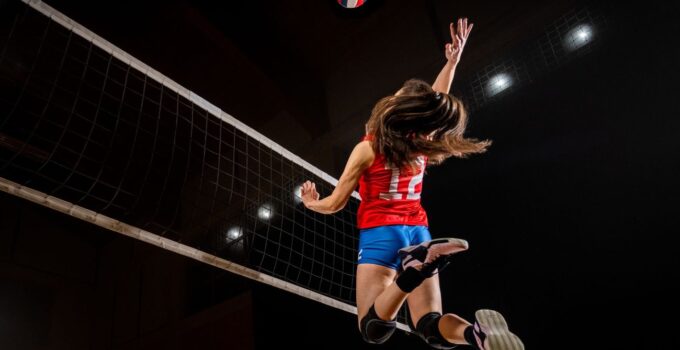Did you know that as of 2024, the collective average height for members of the USA Volleyball men’s and women’s national teams is a towering 6 feet 3.21 inches (191.03 centimeters)? Such a figure not only sets a remarkable standard for upcoming talents but also underscores the tremendous importance of stature in this high-flying sport.
With the average height of volleyball players in 2024 varying substantially by position, aspiring young athletes are offered a clear benchmark towards reaching the pinnacle of volleyball performance.
This stature-observing trend is not just a mere insight into the physicality of elite volleyball; it’s a vivid canvas illustrating the intersection of biological gifts and strategic play-making. The 2024 volleyball player height data provides a compelling storyline – as volleyball players continue to evolve, their heights follow suit, each measurement revealing a unique niche within the court.
Whether it’s the sheer skyward reach of the national team’s middle blockers or the agile adaptability of expert liberos, the volleyball player average height is a crucial thread in the tapestry of the sport’s competitive fabric.
Key Takeaways
- USA Volleyball teams’ combined average height is a key indicator of the fundamental role player height plays.
- The variance in volleyball player average height by position provides aspirants with clear physical benchmarks.
- 2024 presents detailed volleyball player height data, interpreting the evolving physical dynamics of the sport.
- Understanding the average height of volleyball players in 2024 by position is crucial for strategic game plays.
- Height averages guide aspiring players, from youth levels up to national team prospects, in their volleyball journey.
The Importance of Height in Volleyball
The quintessential image of a volleyball player often includes towering height, which serves as a significant advantage in the sport. Statistically, volleyball player height has been an indicator of a player’s potential to dominate specific roles within the game. Examining volleyball player height statistics, trends, and how they relate to the player’s position on the team elucidates the interplay between physical attributes and performance.
An Overview of the Role of Height Across Positions
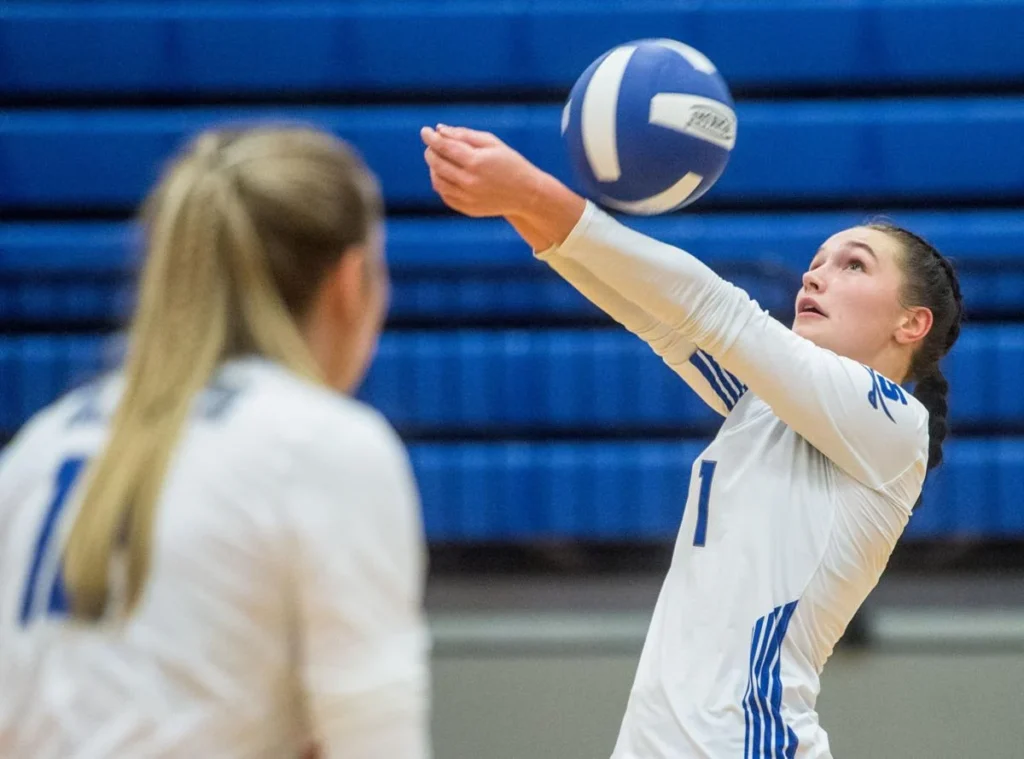
Source: dnronline.com
In volleyball, each position benefits from advantages that come with height. Middle blockers and outside hitters, for instance, can use their stature to reach higher, improving their blocking and spiking capabilities. Opposite hitters and setters also value height for increased reach and visibility.
Even so, the strategic nature of volleyball allows for effective play across a variety of heights, with each position displaying its own average height by volleyball position.
Comparing Average Heights: USA Teams and Professional Leagues
Comparative analysis between the average heights of USA volleyball teams and those in professional leagues around the world indicates a consistent trend: higher height averages are prevalent among elite athletes. However, the height requirements may vary, both domestically and internationally, reflecting the sport’s adaptive nature to varying player physiques.
| Position | Average Height of USA Women’s Team | Average Height of USA Men’s Team | Professional League Average |
|---|---|---|---|
| Libero | 5’7″ | 5’11” | 5’8″ |
| Setter | 6’0″ | 6’3″ | 6’1″ |
| Outside Hitter | 6’1″ | 6’5″ | 6’4″ |
| Middle Blocker | 6’3″ | 6’8″ | 6’7″ |
| Opposite | 6’3″ | 6’8″ | 6’6″ |
Underdog Stories: Succeeding Beyond Height Expectations
Despite the evident volleyball player height trends, there are inspiring athletes who have transcended height expectations. Players like Kendall White and Kyle Dagostino have carved out successful careers in the presence of taller competitors.
Their stories highlight the dynamism of volleyball – a sport where skill, agility, and emotional intelligence can lead to elite performance, regardless of stature.
Average Height of Volleyball Players in 2024 (By Position)
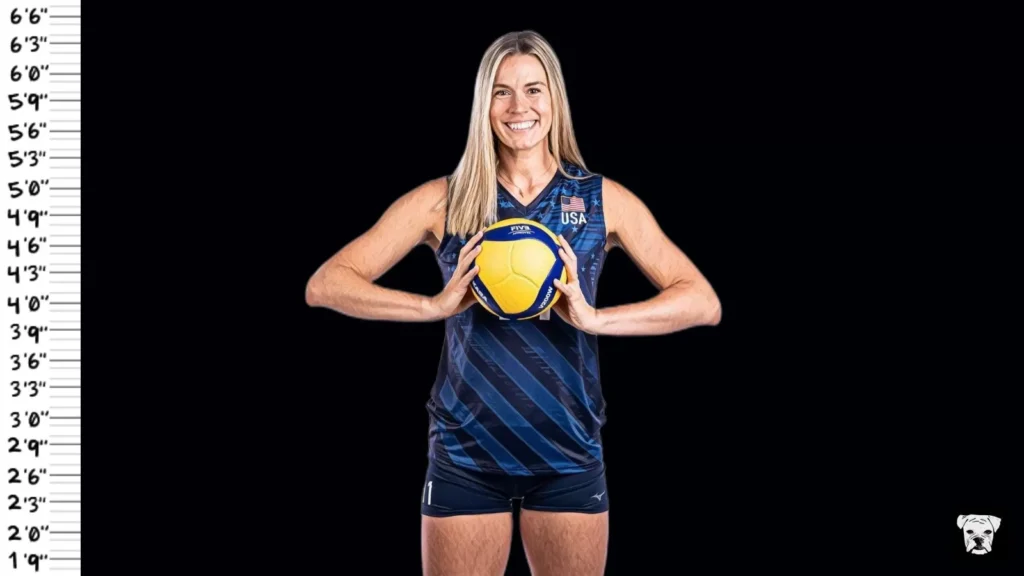
Source: jokermag.com
In an era where the physicality of athletes is scrutinized for competitive advantage, the average height of volleyball players in 2024 emerges as a focal point for analyses. Height matters, not just overall, but with specificity to each position on the court.
The data pertaining to the tallest volleyball player in 2024 remains a captivating metric for fans and experts alike. This insight into player stature offers a strategic lens through which we can appreciate the evolution of volleyball as it skews toward towering figures who dominate the net.
Yet, it’s the position-by-position breakdown that elucidates the nuanced demands of the sport.
| Position | USA Women’s National Team Average Height | USA Men’s National Team Average Height |
|---|---|---|
| Liberos | 5 ft 6.5 in (168.91 cm) | 5 ft 11.25 in (180.98 cm) |
| Setters | 6 ft 0.43 in (183.97 cm) | 6 ft 3.25 in (191.14 cm) |
| Outside Hitters | 6 ft 1.67 in (187.11 cm) | 6 ft 5.55 in (196.97 cm) |
| Middle Blockers | 6 ft 3.27 in (191.19 cm) | 6 ft 8.86 in (205.38 cm) |
| Opposites | 6 ft 3.43 in (191.59 cm) | 6 ft 8.8 in (205.23 cm) |
The varying average heights reflect the somatotype ideal for each role; liberos prioritize agility over size, while middle blockers leverage their height for blocking and attacking above the net.
As the game advances, these physical benchmarks guide scouts, coaches, and players looking to understand the morphological traits that correlate with volleyball success.
The statistics signify a clear gravitation towards stature, particularly with positions such as Middle Blockers and Opposites, where height serves as an intrinsic asset for the rigors of play in 2024’s competitive landscape.
Men’s Volleyball Height Averages: Positional Breakdown
In dissecting the average height of volleyball players in 2024, a clear trend emerges that correlates player stature with their respective roles on the court. With each position demanding different physical attributes and skills, the height of these athletes becomes a significant performance factor.
Analyzing the men’s national volleyball teams, we see a spectrum of heights that underscore the diversity and specialized nature of player positions.
Average Heights of Men’s National Team Positions
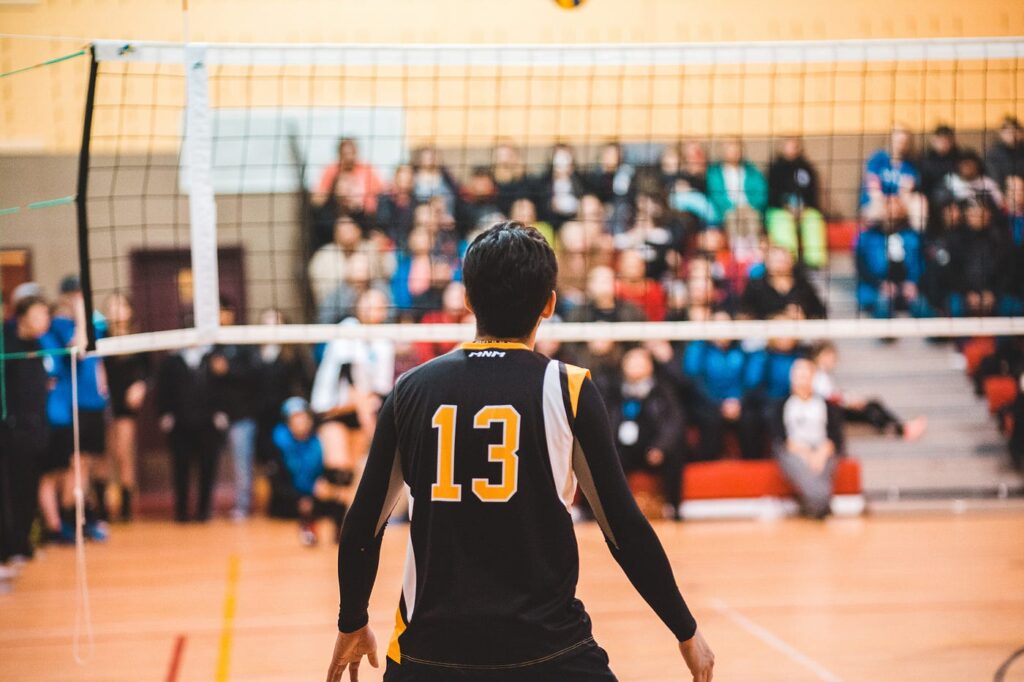
Source: towardsdatascience.com
The latest figures reveal interesting insights into the average height by position among the USA Men’s National Team. A detailed overview shows that Middles, vital for blocking and quick attacks, often tower over their teammates, whereas Liberos, who excel in defensive roles, are notable for their agility and reflexes, which are not necessarily height-dependent. Here’s how the numbers break down:
| Position | Average Height | Comparable Height in Other Sports |
|---|---|---|
| Middles | 6 feet 8.86 inches (205.38 cm) | NBA players |
| Setters | 6 feet 3.25 inches (191.14 cm) | N/A |
| Outside Hitters | 6 feet 5.55 inches (196.97 cm) | NFL players |
| Opposites | 6 feet 8.8 inches (205.23 cm) | N/A |
| Liberos | 5 feet 11.25 inches (180.98 cm) | N/A |
Tallest and Shortest Men’s National Team Players
The exemplary heights of players such as Tyler Mitchem, who stands at an imposing 6’11”, contrast sharply with the more modest stature of Kyle Dagostino, who measures at 5’9″.
These players epitomize the height variance within the sport. This diversity is a testament to volleyball’s inclusivity, where player height, while important, is just a single component of an athlete’s total capability on the court.
“Volleyball continues to be a sport where height is cherished, yet the players like Dagostino illustrate that skill and tenacity can level the playing field.”
The intimate relationship between a player’s height and their positional efficacy does not overshadow the fact that volleyball offers a platform for a wide array of athlete profiles. Men’s volleyball height averages in 2024 affirm that while the sport favors height, it does not limit the opportunity for players of various statures to excel and contribute significantly to their teams.
Women’s Volleyball Height Averages: Positional Analysis
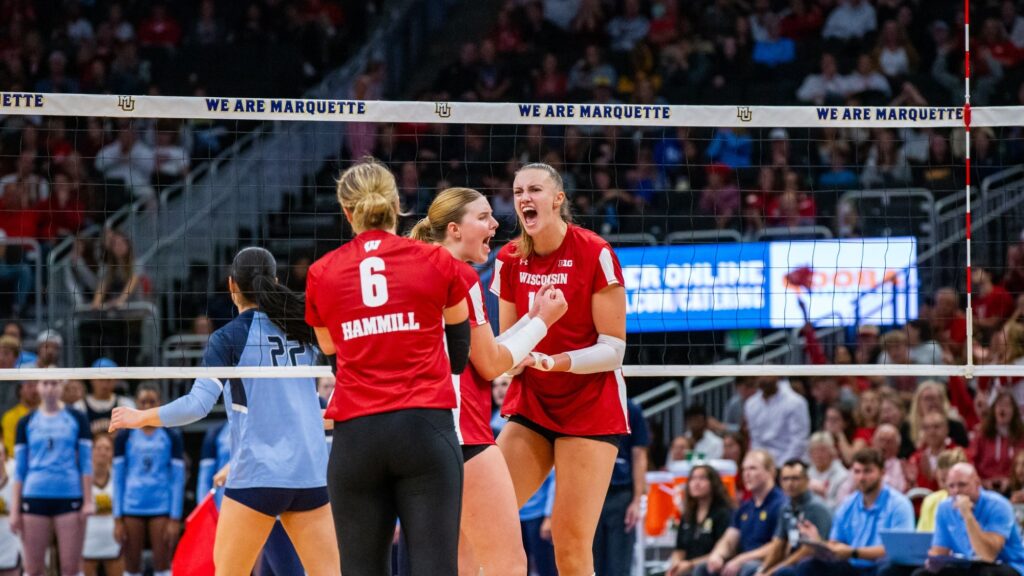
Source: uwbadgers.com
Height has always played a pivotal role in the sport of volleyball, with some positions demanding a taller stature for optimal performance. In women’s volleyball, the role of a player’s height is both a physical and tactical asset, and the average height by volleyball position underlines the diversity within a team’s lineup.
An examination of the USA Women’s National Team’s roster reveals that certain positions, namely Opposites and Middle Blockers, typically tower over others with averages surpassing 6 feet 3 inches, indicative of their roles that often require high-reaching block and attack abilities.
Exceptional players like Dana Rettke, who stands at an impressive height of 6’8″, illustrate the towering potential within the ranks of a women’s volleyball team. Not only does that make her remarkable among her own peers, but would also make her one of the tallest female athletes around, competing with the tallest WNBA players.
Conversely, positions like the Libero require agility and speed over height, exemplified by Kendall White’s 5’5″ stature, validating that successful volleyball player height can indeed vary significantly depending on position and playing style.
| Volleyball Position | Average Height (Women’s National Team) |
|---|---|
| Libero | 5 feet 5 inches – 5 feet 7 inches |
| Setter | 5 feet 10 inches – 6 feet 1 inch |
| Outside Hitter | 6 feet 0 inches – 6 feet 2 inches |
| Middle Blocker | 6 feet 2 inches – 6 feet 4 inches |
| Opposite | 6 feet 2 inches – 6 feet 4 inches |
The interplay of these height dynamics among the positions allows for a stratified yet cohesive team structure, where each player’s unique stature translates into their specialized role on the court.
It’s fascinating to observe how the average height by volleyball position shapes the game’s strategies, from the towering middle blockers dominating the net to the swift and responsive liberos anchoring the defense.
“A player’s height is an innate advantage, but it’s their skill set and game intelligence that truly defines their contribution to the team.”
In conclusion, the blend of different heights within a women’s volleyball team is emblematic of the sport’s inclusivity and tactical complexity. It underscores an evolving narrative where height, while influential, is merely one aspect of a player’s overall aptitude and impact on the game.
Height Averages in College Volleyball Recruitment
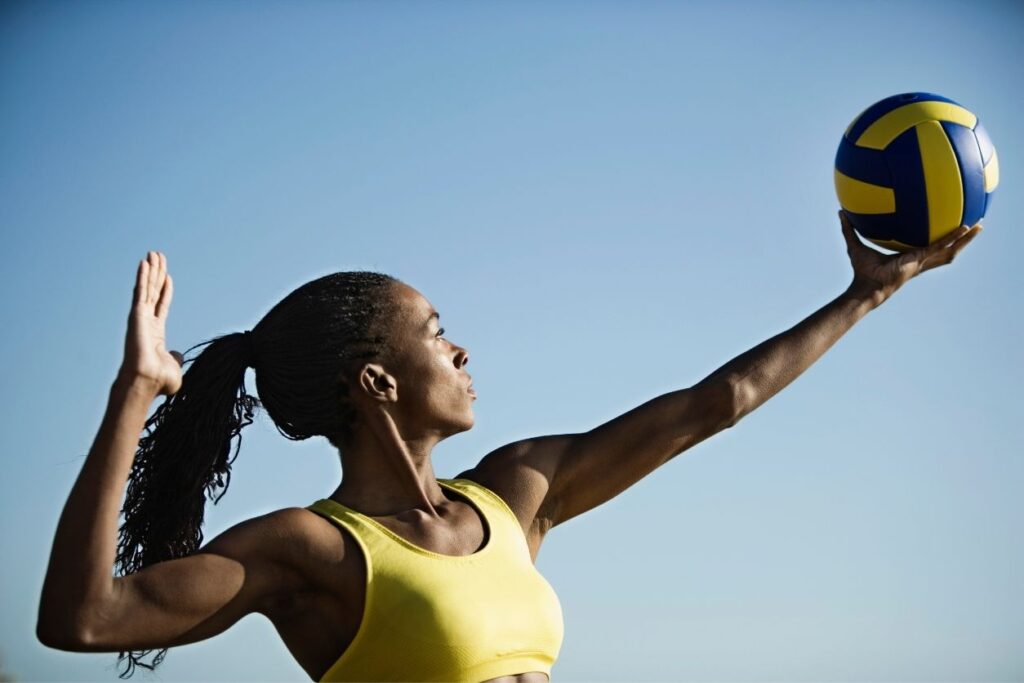
As volleyball recruiting intensifies, collegiate programs across the nation focus on the volleyball player average height and robust physical profiles that indicate a player’s competitive edge. Notably, the recruitment process heavily weighs on an athlete’s height, especially when scouting for Division I volleyball prospects.
Desired Height and Physical Profiles for Top Divisions
For many volleyball programs in top-tier colleges, the recruitment criteria often mirror the physical attributes of professional athletes. Recruiters are particularly attentive to those who demonstrate vital height statistics conducive to the high-stakes environment of Division I competitions.
The trend indicates a preference for players who closely align with the towering heights seen in the sport’s professional domain, speaking to a broader expectation for athletes to possess an imposing physical presence on the court.
Physical Measurements and Performance Metrics in Volleyball Recruitment
The AVCA avcaVPI™ database has become a critical tool in distinguishing the performance capabilities of student-athletes. It contains invaluable data on physical measurements like vertical jumps and standing reaches—metrics that give insight into a volleyball contender’s potential on a collegiate team.
Consequently, volleyball recruits can substantially benefit from having their athletic statistics verified by third-party organizations. This practice not only ensures the reliability of data provided to scouts but also showcases an athlete’s dedication to transparency and professionalism.
| Position | Average Height | Standing Reach | Vertical Jump |
|---|---|---|---|
| Setter | 6 feet 0 inches | 94 inches | 30 inches |
| Outside Hitter | 6 feet 1 inch | 98 inches | 32 inches |
| Middle Blocker | 6 feet 3 inches | 100 inches | 34 inches |
| Libero | 5 feet 8 inches | 90 inches | 28 inches |
| Opposite | 6 feet 2 inches | 99 inches | 33 inches |
In summary, height and performance metrics serve as key barometers for volleyball recruiting, enabling coaches to architect teams that embody the athletic prowess and physical stature requisite for collegiate-level triumphs.
Training Beyond the Average: Enhancing Performance
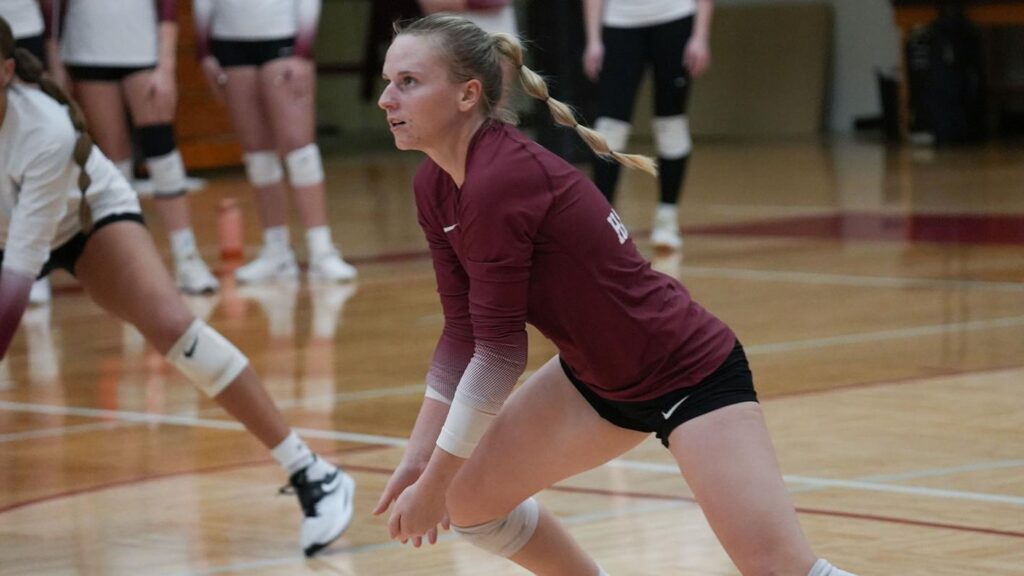
Source: hamlineathletics.com
As volleyball continues to evolve, the quest to gain a competitive edge has led players to refine their training techniques, particularly those who may not have the advantage of meeting the 2024 volleyball player height standards.
While physical stature contributes to a player’s presence on the court, what truly defines an athlete’s potential is their ability to maximize performance through dedicated training that focuses on strength, flexibility, and agility.
Understanding the nuances of volleyball player height trends can be pivotal in constructing a training regimen that’s designed to elevate a player’s vertical leap and improve overall athleticism.
A curated mix of exercises can aid athletes in defying the average and excelling in their vertical jumping power, a key component for spiking and blocking in the game of volleyball.
- Box Jumps: These increase explosive power, conditioning the legs for those high-flying moments that can turn the tide in a tight match.
- Squats: By building lower body strength, squats contribute significantly to the force a player can apply in a vertical leap.
- Jump Rope: This stamina-building activity fosters footwork agility and cardiovascular resistance, vital for enduring the rigors of an intense volleyball game.
- Stretching: Flexible muscles are less prone to injury and can contribute to improved jump height by allowing a full range of motion during the action.
These exercises, integral to a player’s physical development, must be consistently practiced with proper technique and intensity.
For those aiming how to jump higher in volleyball, persistence in the face of physical challenges is crucial. It’s this commitment that enables athletes to push beyond their perceived limitations and match or even surpass the prowess of taller counterparts.
The pursuit of athletic excellence in volleyball requires more than height—it demands the resilience and tactical application of a well-rounded physical training approach.
Players who may not align with emerging height trends have the opportunity to harness their dedication and focused training to become formidable opponents on any court, at any level of the game.
Volleyball Player Height Trends Over the Years
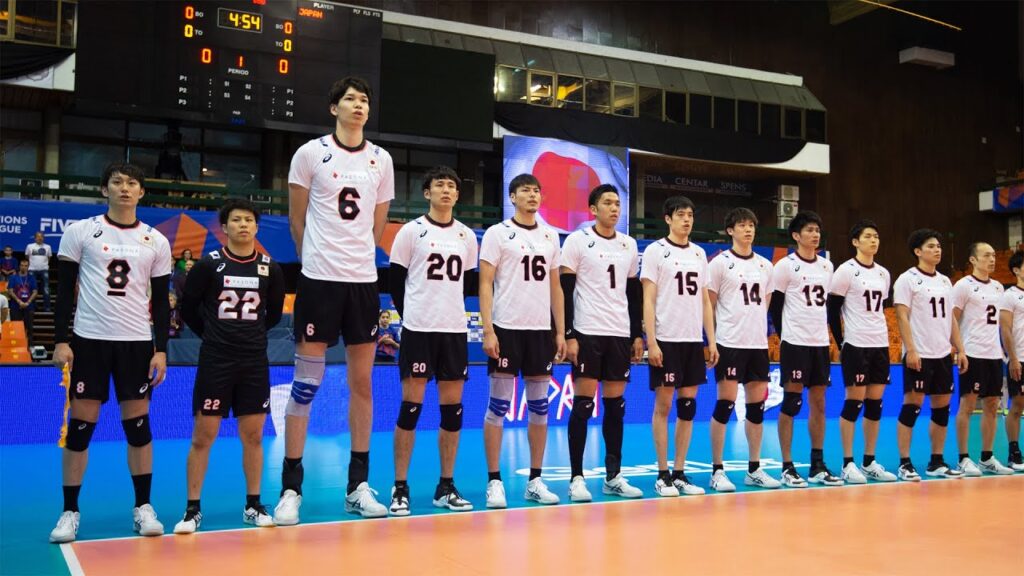
Source: youtube.com
Exploring the historical landscape of volleyball, one can see a distinct pattern in the physical attributes of players. The stature of volleyball athletes has evolved, with the emphasis on height becoming increasingly evident, especially in central roles such as Middle Blockers and Opposites.
How Height Has Influenced the Evolution of Volleyball
Height has long been acknowledged as a significant factor in volleyball, offering advantages in blocking, spiking, and the overall intimidation factor on the court. The preference for taller athletes aligns with the sport’s rising physical demands and the tactical evolution of the game, where reach can influence the outcome of high-stakes matches.
Comparing Current Data to Historical Height Trends
The data from recent years highlights a consistent increment in the average height of elite volleyball players, transcending the benchmark of six feet. This vertical prominence within the sport illustrates the persistent demand for height, which supports the performance-related benefits it confers to players in terms of reach and aerial dominance.
To further contextualize the significance of height in volleyball, below is a comparative table that reflects the dramatic transformation of volleyball player height statistics over the span of the sport’s history.
| Decade | Average Height of Men’s National Team | Average Height of Women’s National Team |
|---|---|---|
| 1980s | 6 feet 2 inches | 5 feet 11 inches |
| 1990s | 6 feet 4 inches | 6 feet 0 inches |
| 2000s | 6 feet 6 inches | 6 feet 1 inch |
| 2010s | 6 feet 7 inches | 6 feet 2 inches |
| 2020s | 6 feet 8 inches | 6 feet 3 inches |
As outlined above, volleyball player height trends have exhibited a definitive upward trajectory, echoing the sport’s advancement and its perpetual chase for towering presence on the court. Yet while these height statistics favor the tall, they also underscore the sport’s rich history of adapting and catering to athletes of varied capabilities.
The Tallest and Shortest Players in Volleyball History
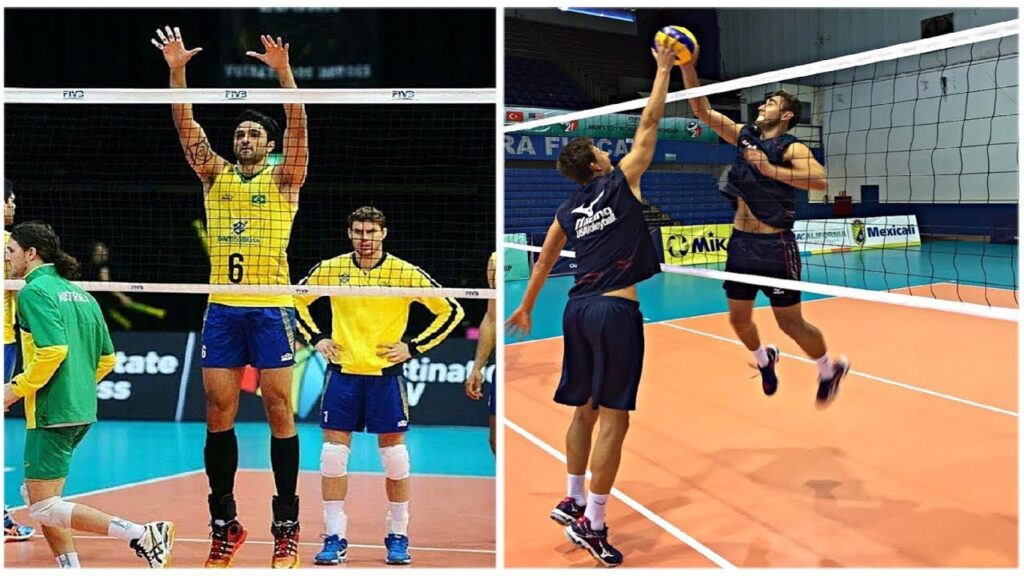
Source: youtube.com
The world of volleyball has always marveled at the exceptional heights of its players. A handful of athletes have defied the norms, setting records for their towering presence and demonstrating that height can create a spectacular edge in the sport.
Among them, the tallest volleyball player in recent times has been Morteza Mehrzad from Iran, who captured global attention with his remarkable height of 8.1 feet (246 centimeters).
Conversely, the sport also celebrates those at the other end of the spectrum. Shorter players, while less common in the limelight, have proven that technique and tenacity can also secure success on the court.
These individuals exemplify the extensive range that the sport of volleyball espouses, each making their indelible mark and contributing to the rich tapestry that makes up the game’s history and its future.
As we look towards the upcoming season and the tallest volleyball player of 2024, the sport continues to be a testament to the diversity of its athletes, embracing variations in volleyball player height as part of its inclusive and dynamic nature.
| Player | Height | Country | Position |
|---|---|---|---|
| Morteza Mehrzad | 8.1 feet (246 cm) | Iran | Middle Blocker |
| Anna Smrek | 6.8 feet (207 cm) | Canada | Opposite |
As the competition grows each year, the intriguing quest to identify the tallest volleyball player of 2024 and beyond continues. This fascination is not solely about the novelty but also about understanding how exceptional physical attributes can be harnessed to excel in this highly strategic and competitive sport.
Together, players of all statures are united by their love for the game, proving that when it comes to talent and skill, height is but one part of the equation.
Position-Specific Skill Sets vs. Height: A Comprehensive Look
The arena of competitive volleyball sees a perpetual debate on the significance of a player’s height in relation to their skill set and the position they occupy on the court. With volleyball player height statistics routinely analyzed, coaches and players alike seek to understand the impact of height within each volleyball position.
It’s evident that while possessing a height that aligns with the average height by volleyball position can be beneficial, proficiency in volleyball emerges more decisively from a harmonious blend of physical attributes and positional mastery.
How Different Positions Utilize Player Heights
Each position on the volleyball court exploits height in varied ways. Setters, while not necessarily needing to tower over the net, employ their height for a swift overhead reach, effectively executing sets. Middle blockers, however, leverage their towering statures for intimidating blocks and spikes, making height an undeniable asset.
Outside hitters strike a balance, using a combination of elevation and power to score from the flanks. However, liberos break this mold entirely; their defensive specialization does not necessitate height as their success hinges on agility and precision over stature.
Case Studies: Profiling Players Who Excel in Skills and Height
Examining prominent players across different volleyball positions offers real-world insights into this interplay between height and skill. For instance, renowned setters have showcased how strategic play-calling and accurate ball distribution often overshadow the need for exceptional height.
Meanwhile, elite liberos frequently demonstrate that extraordinary reflexes and dive techniques can counteract the advantage of height in opponents. Furthermore, skillful outside hitters have consistently proved that timing, spike technique, and court awareness prevail over mere physical reach.
Conclusion
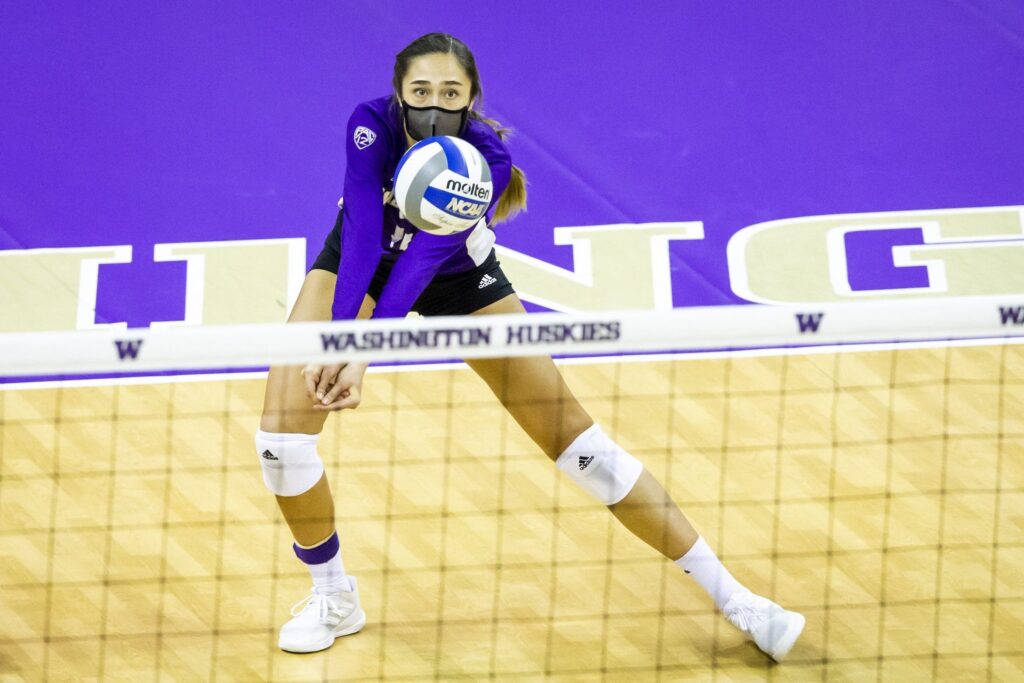
In the landscape of volleyball as it stands in 2024, the 2024 volleyball player height data serves as a testament to the sport’s evolution, emphasizing how stature continues to play a significant role in the game.
However, while the volleyball player average height offers insights into the physical benefits that come with being taller, it is clear that the sport is not solely the domain of those who meet these metrics. Volleyball remains inclusive, providing athletes of various sizes the opportunity to harness their unique skills and make an indelible impact on the court.
From storied national team lineups to the aspiring players navigating the challenges of recruitment, volleyball endorses a spectrum of player profiles.
The diversity in height seen among these athletes highlights that, despite the advantages that come with stature, success is still achievable for those with the determination to train hard and master the intricacies of the sport. It is a dynamic blend of innate ability and honed expertise that ultimately steers a player’s career trajectory.
To conclude, as volleyball progresses, it maintains a balance between celebrating the athletic marvels of height and recognizing the potent mix of talent and skill that can elevate a player to greatness.
The 2024 volleyball player height data is not just a number—it is part of a broader narrative that champions diverse contributions to a sport known for its excitement, strategy, and inclusivity.
FAQ
What is the average height of volleyball players in 2024 by position?
The average height for the USA Women’s National Volleyball Team in 2024 is as follows: Liberos at 5 feet 6.5 inches, Setters at 6 feet 0.43 inches, Outside Hitters at 6 feet 1.67 inches, Middle Blockers at 6 feet 3.27 inches, and Opposites at 6 feet 3.43 inches.
For the USA Men’s National Team: Liberos at 5 feet 11.25 inches, Setters at 6 feet 3.25 inches, Outside Hitters at 6 feet 5.55 inches, Middles at 6 feet 8.86 inches, and Opposites at 6 feet 8.8 inches.
How does height impact a volleyball player’s role on the team?
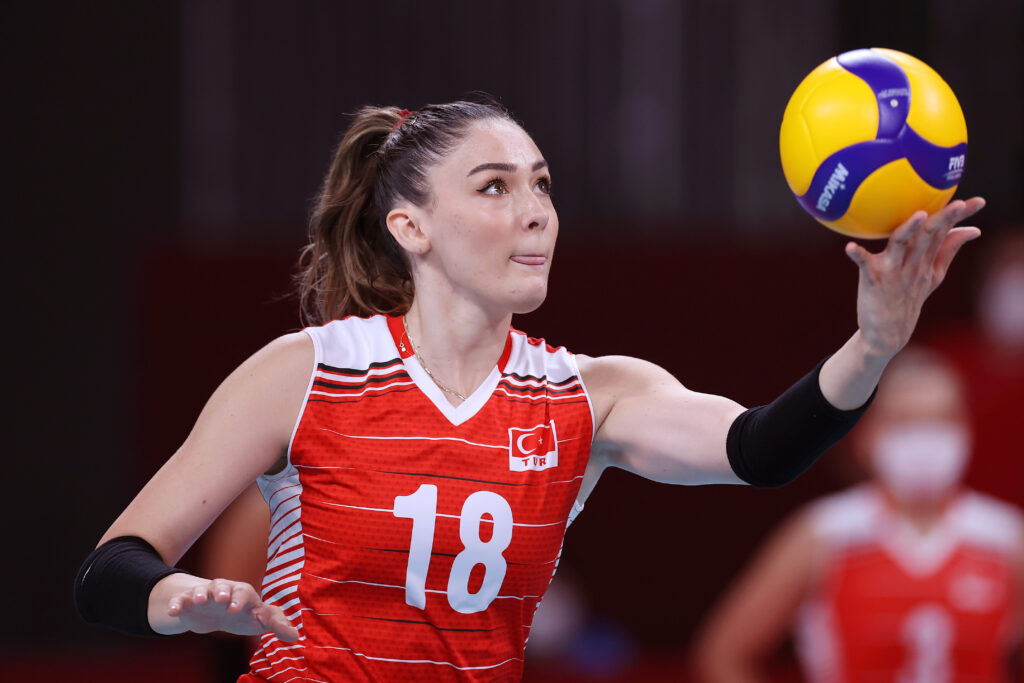
Source: nypost.com
Height is a significant asset in volleyball, particularly affecting the role players have on the court. Taller players are often favored for positions such as Middle Blocker and Opposite because they can reach higher and block more effectively. Conversely, shorter players, like Liberos, are often valuable for their agility and defensive prowess.
Can a player succeed in volleyball without being exceptionally tall?
Yes, while taller players may have certain advantages, volleyball players of all heights can succeed. Case studies of players in various positions show that skill, determination, and teamwork can lead to success irrespective of height. Notable players like Kendall White and Kyle Dagostino are examples of players who have excelled despite not being the tallest in their positions.
What are the height trends seen in men’s and women’s volleyball teams?
Height trends in volleyball have consistently shown a preference for taller athletes, with positions like Middle Blocker and Opposite often filled by the tallest team members. Men’s volleyball players tend to be shorter on average than NBA players but taller than NFL players. Over time, volleyball players have generally maintained heights over 6 feet on national teams.
How do college volleyball recruiters evaluate a player’s height?
In college volleyball recruitment, height is an important metric, with coaches often seeking players with specific physical profiles that match top performance levels, especially for Division I prospects. Besides height, other physical measurements like vertical jumps and standing reaches are considered, using databases like the AVCA avcaVPI™ to assess potential.
What training exercises can help a volleyball player improve their performance?
Training regimens for volleyball players include exercises that focus on increasing vertical leap ability and maximizing strength and agility. Workouts like box jumps, squats, jump rope, and stretching are commonly utilized to enhance these aspects, crucial for players of any position.
How have volleyball player height trends evolved over the years?
Historical data reveals a consistent trend toward favoring taller athletes in volleyball, especially in positions that benefit from a higher reach and blocking capabilities. The evolution of these trends highlights the enduring significance of height in volleyball, although players of varied statures continue to find success in the sport.
Who are some of the tallest and shortest players in volleyball history?
Volleyball history has presented players with extraordinary height, such as Morteza Mehrzad, who stands at 8.1 feet (246 centimeters), and players like Dana Rettke in women’s volleyball, who is 6.8 feet (207 centimeters) tall. On the shorter side, players like Kendall White demonstrate that not all successful volleyball players are exceptionally tall.
How do height and position-specific skills equate in volleyball?
In volleyball, while height provides certain advantages, such as reach and blocking ability, the combination of height and position-specific skills is crucial. A comprehensive skill set, strategic understanding, and mental sharpness are essential for players to excel in their roles and complement their physical attributes.

